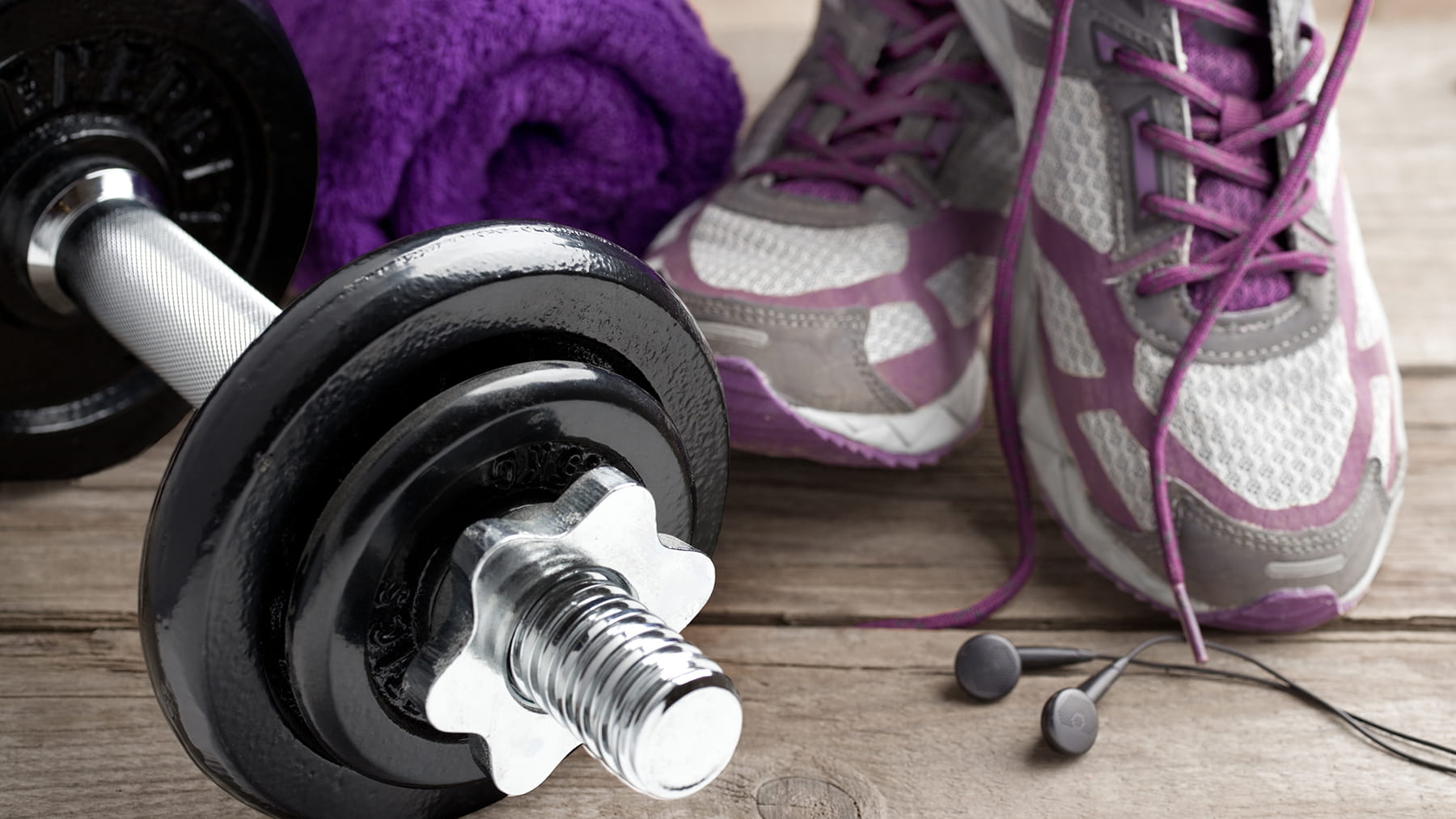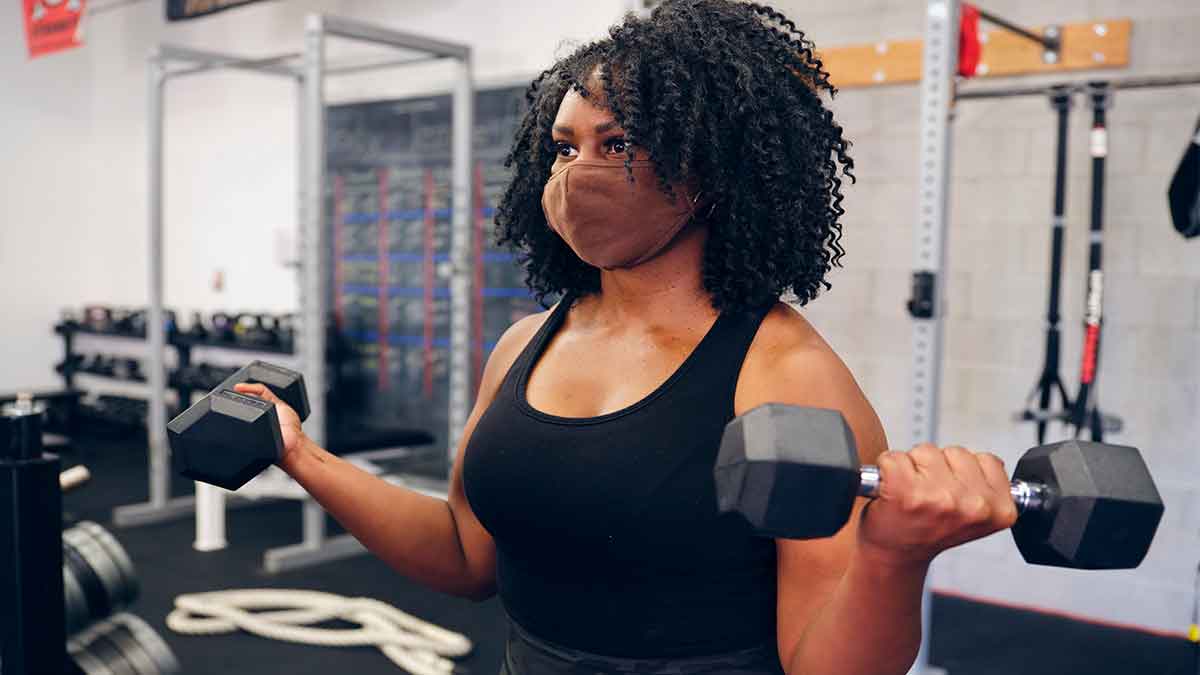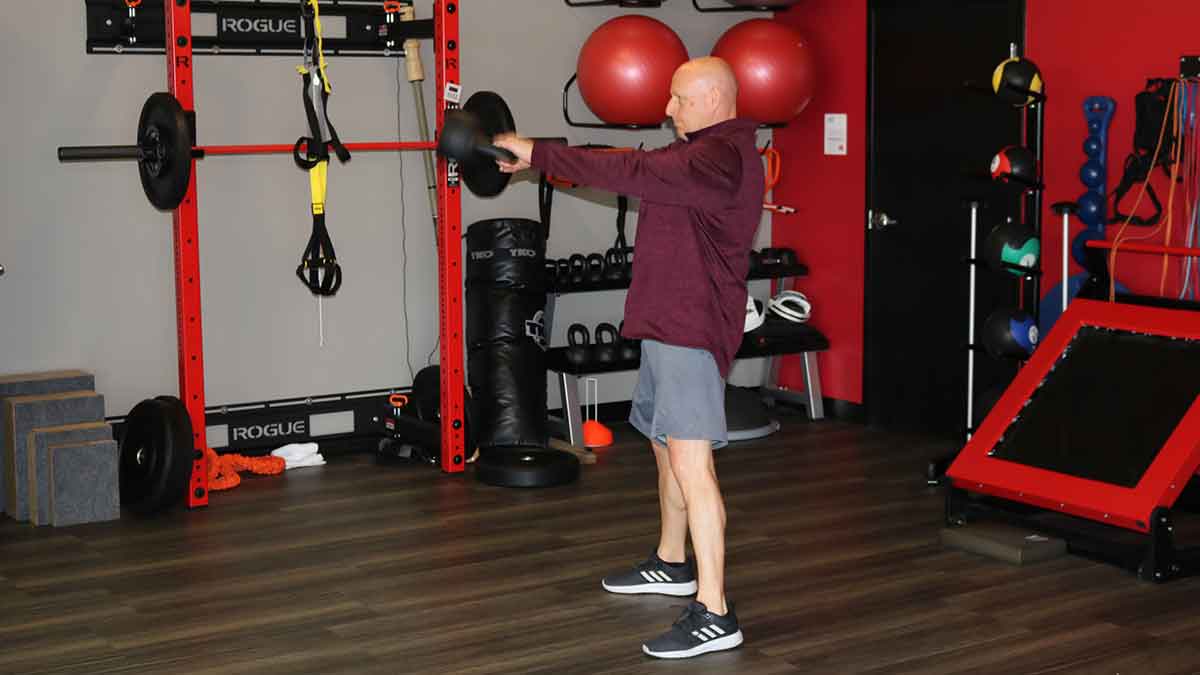Want to be a better runner? Start lifting weights

Running can feel like a straightforward endeavor: The best way to get better is to simply lace up the shoes and hit the pavement. But our experts say a few sessions in the weight room can improve your abilities while reducing your chance of injury.
Finding time for strength-training exercises can be difficult for runners with busy schedules. Luckily, lifting weights doesn’t have to be time consuming, and runners can follow workout routines that take less than 20 minutes to complete.
And, says Chris Kolba, a physical therapist at The Ohio State University Wexner Medical Center, the results are well worth the time.
“Lifting weights can make a big difference for runners,” according to Kolba.
In a nutshell, the weight training will give your running muscles more strength, which improves athletic performance and reduces your risk of injury.
How does lifting reduce your chance of injury?
It’s all about the forces your feet and legs experience while you are running.
“Your foot is on the ground for maybe a tenth of a second, but during that time it’s handling five to eight times your body weight,” Kolba explains.
Strength training can increase your body’s ability to both absorb shock and control motion. This improves your athletic performance while also significantly reducing the risk of injury.
So, what exercises should runners do?
Runners should focus on working glutes, core muscles and hips.
Kolba says patient's can experience a weakness in the glute muscle that causes his or her knee, ankles and hips to work “a little harder than they would like to” to compensate.
Some great exercises to prevent this from happening are:
- walking lunges
- seated hip thrusts
- deadlifts and single-leg deadlifts
- side lunges
- side steps with a resistance band
Strength not bulk
“Runners want to build strength but not bulk, typically,” says Kolba. “So, you want to use heavier weights for fewer repetitions.”
He suggests doing three or four sets of four repetitions each, with a weight that you can handle while maintaining good form and control. (It should be challenging but not so challenging that it affects your technique.) Repetitions should be slow and controlled, lasting about six seconds.
How often should I lift weights?
That depends on your fitness level:
Experienced runners: Follow a balanced diet and make sure to get plenty of sleep, which gives your body time to recover. Also, Kolba recommends adding two weight-lifting sessions a week before running.
Beginner runners: Take it a little easier and alternate between running and weight-lifting days, perhaps initially following a routine that involves running on Mondays, Wednesdays and Fridays, and weight-lifting on Tuesdays and Thursdays.
Are you doing it right?
If you don’t have a lot of experience with lifting, remember that having the correct form is critical to prevent injuries. Don’t be afraid to ask for help before you start working out – you can go see a physical therapist or a personal trainer.
“Unfortunately, most of what I do is help patients after an injury,” Kolba says. “But we also work on education and injury prevention, and we welcome people to come in for a visit or to get a program started.”
Finding time for strength-training exercises can be difficult for runners with busy schedules. Luckily, lifting weights doesn’t have to be time consuming, and runners can follow workout routines that take less than 20 minutes to complete.
And, says Chris Kolba, a physical therapist at The Ohio State University Wexner Medical Center, the results are well worth the time.
“Lifting weights can make a big difference for runners,” according to Kolba.
In a nutshell, the weight training will give your running muscles more strength, which improves athletic performance and reduces your risk for injury.
How does lifting reduce your chance of injury?
It’s all about the forces your feet and legs experience while you are running.
“Your foot is on the ground for maybe a tenth of a second, but during that time it’s handling five to eight times your body weight,” Kolba explains.
Strength training can increase your body’s ability to both absorb shock and control motion. This improves your athletic performance, while also significantly reducing the risk of injury.
So, what exercises should runners do?
Runners should focus on working glutes, core muscles and hips.
Kolba coined the phrase “Dormant Butt Syndrome” to describe a weakness in a patient’s glute muscle that causes his or her knee, ankles and hips to work “a little harder than they would like to” to compensate.
Some great exercises to prevent this from happening are:
- walking lunges
- seated hip thrusts
- deadlifts and single-leg deadlifts
Runners also want to work their core muscles and their lateral hips, which act as strong stabilizers when their foot hits the ground. To train these muscles, you should consider doing:
- side lunges
- side steps with a resistance band
Strength not bulk
“Runners want to build strength, but not bulk, typically,” says Kolba. “So, you want to use heavier weights for fewer repetitions.”
He suggests doing three or four sets of four repetitions each, with a weight that you can handle while maintaining good form and control. (It should be challenging but not so challenging that it affects your technique.) Repetitions should be slow and controlled, lasting about six seconds.
How often should I lift weights?
That depends on your fitness level:
Experienced runners follow a balanced diet and make sure to get plenty of sleep, which gives your body time to recover. For those experienced runners, Kolba recommends adding two weight-lifting sessions a week before running.
Beginner runners can take it a little easier and alternate between running and weight-lifting days, perhaps initially following a routine that involves running on Mondays, Wednesdays and Fridays, and weight lifting on Tuesdays and Thursdays.
Are you doing it right?
If you don’t have a lot of experience with lifting, remember that having the correct form is critical to prevent injuries. Don’t be afraid to ask for help before you start working out – you can go see a physical therapist or a personal trainer.
“Unfortunately, most of what I do is help patients after an injury,” shares Kolba. “But we also work on education and injury prevention, and welcome people to come in for a visit or to get a program started.”
Finding time for strength-training exercises can be difficult for runners with busy schedules. Luckily, lifting weights doesn’t have to be time consuming, and runners can follow workout routines that take less than 20 minutes to complete.
And, says Chris Kolba, a physical therapist at The Ohio State University Wexner Medical Center, the results are well worth the time.
“Lifting weights can make a big difference for runners,” according to Kolba.
In a nutshell, the weight training will give your running muscles more strength, which improves athletic performance and reduces your risk for injury.
How does lifting reduce your chance of injury?
It’s all about the forces your feet and legs experience while you are running.
“Your foot is on the ground for maybe a tenth of a second, but during that time it’s handling five to eight times your body weight,” Kolba explains.
Strength training can increase your body’s ability to both absorb shock and control motion. This improves your athletic performance, while also significantly reducing the risk of injury.
So, what exercises should runners do?
Runners should focus on working glutes, core muscles and hips.
Kolba coined the phrase “Dormant Butt Syndrome” to describe a weakness in a patient’s glute muscle that causes his or her knee, ankles and hips to work “a little harder than they would like to” to compensate.
Some great exercises to prevent this from happening are:
- walking lunges
- seated hip thrusts
- deadlifts and single-leg deadlifts
Runners also want to work their core muscles and their lateral hips, which act as strong stabilizers when their foot hits the ground. To train these muscles, you should consider doing:
- side lunges
- side steps with a resistance band
Strength not bulk
“Runners want to build strength, but not bulk, typically,” says Kolba. “So, you want to use heavier weights for fewer repetitions.”
He suggests doing three or four sets of four repetitions each, with a weight that you can handle while maintaining good form and control. (It should be challenging but not so challenging that it affects your technique.) Repetitions should be slow and controlled, lasting about six seconds.
How often should I lift weights?
That depends on your fitness level:
Experienced runners follow a balanced diet and make sure to get plenty of sleep, which gives your body time to recover. For those experienced runners, Kolba recommends adding two weight-lifting sessions a week before running.
Beginner runners can take it a little easier and alternate between running and weight-lifting days, perhaps initially following a routine that involves running on Mondays, Wednesdays and Fridays, and weight lifting on Tuesdays and Thursdays.
Are you doing it right?
If you don’t have a lot of experience with lifting, remember that having the correct form is critical to prevent injuries. Don’t be afraid to ask for help before you start working out – you can go see a physical therapist or a personal trainer.
“Unfortunately, most of what I do is help patients after an injury,” shares Kolba. “But we also work on education and injury prevention, and welcome people to come in for a visit or to get a program started.”




